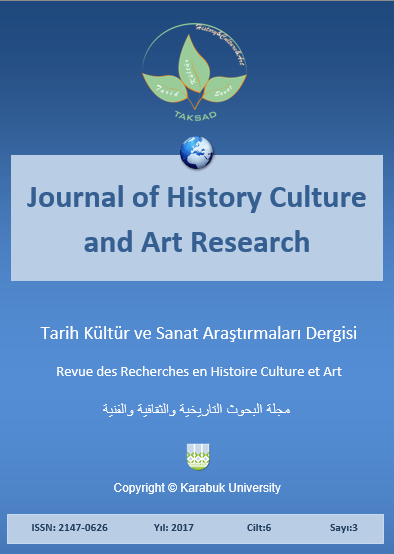Associative and image Framework of the Creolized Text as an Object of the Linguistic Research
DOI:
https://doi.org/10.7596/taksad.v6i3.1025Keywords:
Creolized text, discourse context, linguistic research, cognitive metaphor, imagery.Abstract
The authors of the article consider the associative and image framework of the creolized text from a position of discursive and pragmatic, intentional analysis which reveals a synergetic complex essence, a role of verbal and non-verbal elements of the creolized text. Our research is based upon a knowledge of linguistics: communicative pragmatics, cognitive linguisticstext linguistics, the theory of a discourse. There are specialized journals devoted to the discursive analysis, e.g. “Text” and “Discourse Processes”. The most known centers of discourse researches are situated in the USA. For example, the California University in Santa Barbara, in Los Angeles, the Oregon University in Eugene, the Georgetown University.
References
Alefirenko, N. F. (2009). «The living word»: problems of functional lexicology. M.: Flinta: Nauka. pp. 344. (in Russian)
Alefirenko, N. F. (2010). Cultural Linguistics: value-semantic space of language. M.: Flinta: Nauka. pp. 288. (in Russian)
Alefirenko, N. F. (2013). Artistic frame as a means of interpretation of metaphors (fiction prose writers of the Central Chernozem region): Belgorod State University Scientific Bulletin. Humanities Philology Journalism Pedagogy psychology. 13 (156); 5-11. (in Russian)
Anisimova, E. E. (2003). Linguistics of the text and Intercultural Communication (on the material of creolized texts). M.: Publishing Center «Academy»; 8-15. (in Russian)
Austin, John (1986). Word as action: New in foreign linguistics. 17. The theory of speech acts. M.: Progress; 22-129.
Babenko, L. G. (2000): The Linguistic analysis of literary text. Ekaterinburg: Publishing house Ural. University Press. pp. 534. (in Russian)
Babushkin, V. U. (1985). A Phenomenological philosophy of science: a critical analysis. M.: Nauka. pp. 188. (in Russian)
Bernatskaya, A. A. (2000). To the problem of «creolization» of the text: history and current status: Speech communication: a Specialized Bulletin. Krasnoyarsk state University. 3 (11); 104-110. (in Russian)
Bogdanov, V. V. (1984). Activity aspect of the semantics: Semantics and pragmatics syntactic units. Kalinin;12-23. (in Russian)
Bogin, G. I. (2001). Gaining the ability to understand: Introduction to Hermeneutics. Tver. pp.731. (in Russian)
Bolotnova, N. C. (2005). Lexical means of representation of artistic concepts in the poetic text: Bulletin of TSPU. 3; 18-23. (in Russian)
Cheyf, U. (1994). Discourse, Consciousness, and Time: The Flow and Displacement of Conscious Experience in Speaking and Writing. Chicago: The University of Chicago Press.
Chygayev, D. P. (2010). Methods of creolization of modern advertising text: abstract. ...Ph.D. in Philology: 10.02.01. Moscow. pp. 24. (in Russian)
Demyankov, V. Z. (1983). «Event» in semantics, pragmatics and in the coordinates of the text interpretation: Izv. USSR ACADEMY OF SCIENCES. Ser. lit. and yaz. 4; 320-329. (in Russian)
Dijk, T. A. van. Language (2013). Discourse and knowledge: Belgorod State University Scientific Bulletin. Humanities Philology Journalism Pedagogy psychology. 13 (156); 5-23. (in Russian)
Dijk, T. A.van. (1977). Text and context. Explorations in the semantics and pragmatics of discourse. London and New York: Longman. pp.261.
Efremova, T. F. (2000). New dictionary of Russian language. Sensible-word-formation. M.: bustard, Russian language, 2000. pp.1233. (in Russian)
Formanovskaya, N. I. (2007). Speech interaction: communication and pragmatics. M.: Publishing house «IKAR». pp. 480. (in Russian)
Galperin, I. R. (1981). Text as an object of linguistic study. M.: Nauka, 1981. pp. 138. (in Russian)
Humboldt, W. von (1985): The language and philosophy of culture. M.: Progress. pp. 452. (in Russian)
Jaynes, J. (1976). The Origin of Consciousness in the Breakdown of the Bicameral Mind. Houghton Mifflin Company. pp. 476.
Lakoff, J. (1988). Cognitive semantics Meaning and mental representations. Bloomington, 1988; 78-106.
Lakoff, J. (2004). Metaphors that we live in. M.: Editorial URSS. pp. 256. (in Russian)
Ozhegov, S. I. (1990). Dictionary of Russian language. M.: Russian language. pp. 921. (in Russian)
Potebnya, A. A. (1999). The Complete collection of writings: Thought and language The preparation of the text of Y. S. Rasskazov and O. A. Sycheva. Comments Yu. Rasskazov. M.: Publishing House «Labirint». pp. 300. (in Russian)
Shcherba, L. V. (1974). The Language system and speech activity. L.: Nauka. pp. 427. (in Russian)
Yaroshchuk, I. A. (2011). Cognitive-semiological nature of metaphors (fiction prose writers of the Central Chernozem region): Belgorod State University Scientific Bulletin. Humanities Philology Journalism Pedagogy psychology. 24 (119); 67-76. (in Russian)
Downloads
How to Cite
Issue
Section
License
All papers licensed under Creative Commons 4.0 CC-BY.- Share — copy and redistribute the material in any medium or format
- Adapt — remix, transform, and build upon the material for any purpose, even commercially.
Under the following terms:
Attribution — You must give appropriate credit, provide a link to the license, and indicate if changes were made. You may do so in any reasonable manner, but not in any way that suggests the licensor endorses you or your use.
- No additional restrictions — You may not apply legal terms or technological measures that legally restrict others from doing anything the license permits.







